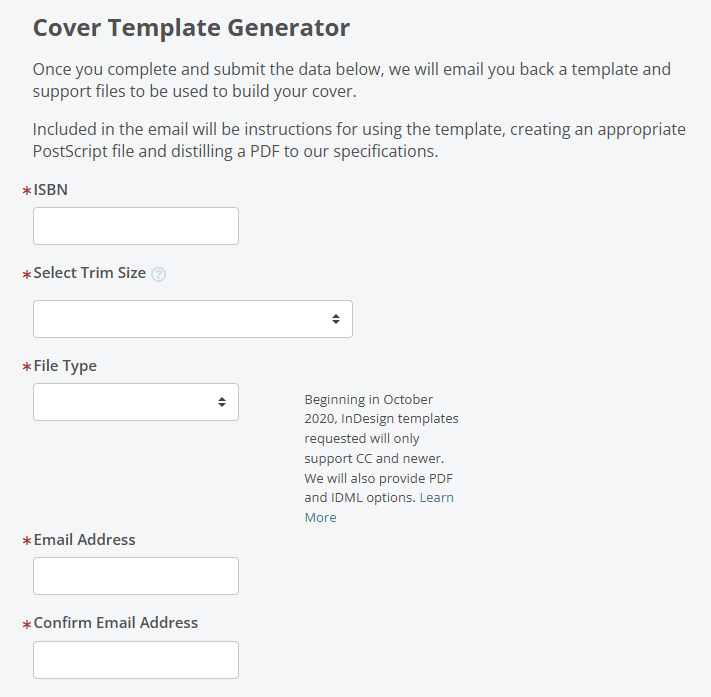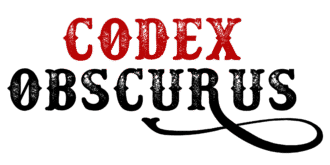
Publishing a book no longer requires a big-name agent or a traditional publishing deal. You can take full control of your publishing journey and still compete with books from the biggest publishing houses.
IngramSpark gives independent authors and small publishers the power to get their books into major bookstores, libraries, and online retailers around the world.
Whether you’re writing fiction, nonfiction, or even a full-color cookbook, this platform opens doors that were once locked shut.
You’re not limited to selling only on Amazon or waiting around for someone else to give your work a green light.
IngramSpark puts your book into the same distribution channels used by traditional publishers, like Books-A-Million, Barnes & Noble, and thousands of libraries and indie bookstores that rely on Ingram’s catalog.
-
IngramSpark gives indie authors access to over 40,000 bookstores, libraries, and schools through global distribution.
-
You retain full rights to your book and can publish on other platforms without restrictions.
-
The platform supports high-quality print options, including hardcover and full-color interiors.
-
While there are setup fees, IngramSpark regularly offers promo codes to waive them.
-
Publishing with IngramSpark requires more technical setup but offers long-term credibility and reach.
That kind of access means your book can appear on retailer websites and bookstore ordering systems worldwide.
IngramSpark is part of Ingram Content Group, one of the most powerful book distribution companies in the world. That alone gives you an edge that many self-publishing platforms can’t match.
Ingram has been around for more than 50 years and powers the supply chain for most of the publishing industry.
When your book is listed in their catalog, it’s not hiding in some obscure corner of the internet. It’s in the same pipeline that delivers books to shelves across the globe.
And as someone who’s used IngramSpark for my own books, I can say the difference in reach and professionalism is obvious once you’re in their system.
What is IngramSpark, and who is it for?
IngramSpark is a self-publishing and distribution platform built for authors, small publishers, educators, and entrepreneurs. It’s designed to help you publish and distribute both print books and eBooks globally.
You’re not just uploading a file and hoping it sells. You’re plugging into a massive infrastructure that gives your book a real shot at reaching readers across the world.
Unlike retail-centric platforms like Amazon KDP, IngramSpark connects you to over 40,000 retailers, libraries, and schools through the Ingram distribution network.
That includes access to buyers who don’t shop on Amazon, like librarians, school administrators, and independent bookstore owners who use Ingram’s catalog every day to fill their shelves.
This platform is ideal for:
- Indie authors who want to publish professionally without exclusivity clauses
- Small presses looking to expand distribution
- Authors interested in getting their books into brick-and-mortar stores
Retailers and thousands of indie bookstores prefer ordering through Ingram’s wholesale channels because it’s part of their existing system. When your book is listed in that catalog, it becomes accessible to booksellers on terms they already trust.
I remember speaking with a bookstore manager who said outright, “We don’t order from Amazon—we go straight to Ingram.” That’s a huge advantage if you want to see your book on an actual shelf and not just buried in a search result online.
What Books Can Be Published on IngramSpark?
You can publish just about any type of book on IngramSpark, as long as your content meets professional publishing standards. That includes:
- Novels
- Memoirs
- Children’s books
- Cookbooks
- Academic texts
- Art books
- Poetry collections
- Self-help and nonfiction titles
Whether you’re publishing a heartfelt novel, a how-to guide on mastering sourdough bread, or a colorful picture book for early readers, IngramSpark gives you the tools to present your work in a polished, bookstore-quality format.
You’re able to choose between paperback, case-laminate hardcover, dust jacket hardcover, and eBook. Each option has its own purpose.
For example, memoirs often look best in hardcover because they feel more substantial, while workbooks or poetry collections might be more affordable in paperback.

The platform supports full-color interiors, which is a huge bonus for cookbooks, art books, and children’s picture books.
I once helped a friend publish a children’s story with vivid watercolor illustrations, and IngramSpark’s color printing made those pages come alive without breaking the bank.
You can even control your trim size, paper type, and binding options to better match the experience you want your readers to have.
One important note: You need to provide your own ISBNs unless you’re publishing only through IngramSpark’s eBook channels, where they can assign one.
I highly recommend owning your ISBNs. It puts your name, or your publishing imprint, on file with book distributors, and it shows bookstores that you’re the official publisher, not just someone pushing content through a third party.
It’s a small detail that makes a big difference in how your book is perceived.
Step-by-Step Guide to Publishing on IngramSpark
Publishing your book on IngramSpark involves more technical steps than Amazon KDP, but it also gives you more control over distribution.
You’re setting up your title the way professional publishers do: handling the layout, assigning ISBNs, and controlling every detail before it goes live. It may take a little more effort upfront, but the flexibility and reach make it worth it.
1. Create an IngramSpark Account
Start by visiting ingramspark.com and clicking “Sign Up.” You’ll choose whether to register as an individual author or as a company.
Registering as a company gives you the option to publish under your own imprint name, which can make your book look more polished to buyers.
You’ll be asked for your contact details, tax information (for royalty payments), and preferred payment method for any setup or print fees.
The dashboard is clean but packed with features, so take a few minutes to explore once you’re logged in. This is where you’ll manage all your titles moving forward.
2. Provide or Purchase ISBNs
Each version of your book (paperback, hardcover, and eBook) requires its own ISBN. In the U.S., you’ll purchase these through Bowker at myidentifiers.com. A single ISBN runs $125, but a block of 10 costs $295, which is the smarter route if you plan on releasing more than one format or title.
Owning your ISBNs matters more than it seems. It signals that you’re the publisher of record and lets you control how your book is listed in industry databases like Books in Print.
I learned this the hard way after using a free ISBN years ago and getting locked into metadata I couldn’t edit. Buying your own is a small investment that pays off in flexibility and credibility.
3. Prepare Your Files
This is where things start to feel real. You’ll need the following files and information ready before uploading:
- A print-ready PDF for the interior (PDF/X-1a format)
- A separate PDF for your full cover, including the correct spine width, trim size, and bleed
- Your metadata: book title, subtitle, description, author bio, pricing, keywords, and BISAC subject categories
IngramSpark has a Cover Template Generator on their website that calculates spine width for you based on your page count and paper type. Don’t skip this, getting your cover dimensions right can save you from rejection during file review.
I use Adobe InDesign for interior layout and Vellum for simpler projects like fiction or memoirs. Both let you export to the precise file format IngramSpark expects. If design isn’t your thing, you can hire pros on Reedsy, Fiverr, or Upwork who are experienced in IngramSpark formatting.
Just make sure they’re familiar with the platform’s requirements, especially things like font embedding and bleed margins.
This part might feel intimidating at first, but once you’ve done it once, it gets easier, and you end up with a book that looks and feels professional. You’re building something people will be proud to hold in their hands.

4. Upload Your Files
Once your files are ready, log in to your dashboard, start a new title, and enter your metadata. Upload your PDFs and cover art. The platform checks for file compatibility and layout issues.
5. Set Pricing and Distribution
IngramSpark lets you customize your wholesale discount (typically 55% for bookstores) and decide whether to make your book returnable. Be cautious, accepting returns can hurt your profits if retailers over-order and return unsold copies.
6. Order a Proof and Approve
Always order a printed proof before approving your book for distribution. I caught a major formatting error in one of my books during the proof stage. It’s better to spot mistakes early than have readers point them out.
What Sets IngramSpark Apart from Other Publishing Platforms?
Plenty of self-publishing platforms exist, but IngramSpark stands out for one critical reason: global reach through one of the world’s largest book distribution networks.
Beyond selling to individual readers, you’re tapping into wholesale systems used by bookstores, libraries, and academic institutions around the world.
Here’s how it stacks up against other popular options:
Amazon KDP
This option gives you incredible exposure on Amazon, and it’s fast and beginner-friendly. But outside of Amazon’s ecosystem, your book has limited visibility. Most brick-and-mortar bookstores avoid ordering directly from Amazon.
IngramSpark lets you distribute to Amazon and everywhere else, so your book can show up in both online searches and bookstore databases.
Lulu
This one is great for niche products like workbooks, calendars, or spiral-bound guides. I’ve used Lulu before for short-run prints, especially when I needed coil binding.
But when it comes to getting a book into bookstores or global catalogs, Lulu doesn’t have the same distribution muscle as Ingram.
Draft2Digital
This platform is an excellent platform for distributing eBooks. It sends your files to Apple Books, Kobo, Barnes & Noble Nook, and more.
But it doesn’t offer physical book publishing like IngramSpark. So while it’s perfect for expanding your digital reach, it won’t help you get a paperback or hardcover into a store.
IngramSpark also allows hardcover publishing, which makes a big difference when you’re producing a nonfiction book, a gift book, or anything that needs a more professional or polished feel. Hardcover formats add value, and they look great on a shelf or in a press kit.
I used IngramSpark to publish a hardcover business guide for a client last year, and the physical copy was impressive enough to land them a bookstore speaking gig. That kind of quality opens unexpected doors.
Pros and Cons of Publishing on IngramSpark
Every publishing platform has strengths and limitations. IngramSpark is no exception. It offers powerful tools and broad access, but you’ll need to weigh those against the learning curve and up-front costs.
As someone who has used IngramSpark for multiple titles, I’ve seen both the upside and the parts that require a little extra patience.
Pros:
Access to over 40,000 global retailers and libraries
Your book becomes available to a massive network that includes independent bookstores, major chains like Barnes & Noble, academic institutions, and public libraries.
That kind of exposure makes a difference when you’re trying to reach readers who don’t shop exclusively on Amazon. I’ve personally seen my titles show up in library systems in the U.S. and the UK after going live on IngramSpark.
Professional printing options including hardcover and color books
The print quality is excellent, and the ability to produce hardcover formats, especially with dust jackets or full-color interiors, gives your book a polished, bookstore-ready feel. This is huge for children’s books, cookbooks, or any title where design matters as much as content.

Author retains full rights and control
You keep 100% of your publishing rights. That means you decide where your book goes, how it’s priced, and what changes are made to the files or metadata. IngramSpark doesn’t claim ownership, which gives you the freedom to adjust your publishing strategy without restrictions.
Compatible with other platforms (no exclusivity requirements)
You can publish on IngramSpark and still use Amazon KDP, Draft2Digital, or even sell direct through your own website. This gives you full flexibility to maximize distribution and sales without locking yourself into one outlet.
Cons:
Upload fees (around $49 per format unless waived via promo codes)
Publishing on IngramSpark comes with setup fees per format. Print and eBook are charged separately. The good news is they frequently offer promo codes (like FREE22 or NANO) that let you bypass the fee entirely. I never pay the full amount. There’s almost always a code floating around.
Strict file formatting requirements
This platform expects print-ready PDFs in a specific format (PDF/X-1a), and the cover file must match exact specs based on page count, trim size, and bleed. It can feel technical if you’re doing it yourself.
I’ve had uploads rejected for minor margin issues, which meant going back into InDesign to tweak things before trying again.
Less intuitive interface compared to KDP
The dashboard isn’t as beginner-friendly as Amazon KDP. Some steps, like generating a proper barcode or calculating spine width, aren’t automated. It helps to go in with a checklist or work with someone who’s familiar with the process.
Limited direct marketing tools
IngramSpark focuses on distribution, not promotion. You won’t find built-in email campaigns, ad services, or author pages like you might with Amazon. Marketing is fully on you, which can feel overwhelming unless you’ve already built a strategy or platform.
Publishing through IngramSpark takes more setup and technical know-how, but it rewards you with professional quality and a truly global reach. You just need to know what you’re stepping into and have the right tools and support lined up to get there.
Success Rate of Self-Publishing on IngramSpark
Success on IngramSpark depends largely on how you market your book. Books listed through IngramSpark tend to do better in libraries, schools, and independent bookstores compared to those published only through Amazon.
Authors like Joanna Penn and Jane Friedman recommend IngramSpark for serious writers who want to build a long-term career.
My own books saw a bump in credibility after listing with IngramSpark. Librarians and bookstores took my work more seriously once they saw it in the Ingram catalog.
Is it free to publish with IngramSpark?
Publishing on IngramSpark used to require setup fees of $49 per print title and $25 per eBook. Those fees still exist, but you can often avoid paying them entirely by using one of their promo codes.
IngramSpark runs promotions throughout the year, especially during big writing events like NaNoWriMo or special industry campaigns, so it’s smart to keep an eye out for codes like NANOWRIMO, FREE22, or SPARKFREE.
I’ve published multiple books on IngramSpark without ever paying those setup fees, simply by planning around their promotions.
You’ll still need to cover a few essentials out of pocket. ISBNs are required for each version of your book (print and digital), and those are not free unless you’re publishing only an eBook and allow IngramSpark to assign one.
But if you want to publish under your own imprint and retain full control, buying your own ISBNs through Bowker (or the appropriate agency in your country) is a must.
Proof copies also come at your own cost, but they’re worth every cent. I always order a physical proof before approving distribution.
Holding your book in your hands, spotting a formatting issue, and fixing it before it lands in readers’ mailboxes? That’s the kind of quality control that saves your reputation.
So no, publishing on IngramSpark isn’t entirely free, but it can be very affordable. With the right promo code and some smart planning, you can cut those setup costs to zero and still walk away with a professionally distributed book.

Does IngramSpark own your book?
Absolutely not. IngramSpark does not claim any rights over your content. You maintain full ownership of your intellectual property.
Your manuscript, design, cover are all yours from start to finish. The platform simply distributes your book through its vast network and makes it available to retailers, libraries, and readers worldwide.
You control every major detail. That includes setting the list price, choosing the trim size, updating files if you need to fix typos or refresh the cover, and deciding which countries or markets to distribute in.
I’ve updated metadata and swapped out revised interior files on my own books without jumping through hoops or asking for approval. That kind of flexibility lets you stay in charge of your publishing strategy, even after your book is live.
IngramSpark is a non-exclusive partner. You’re free to upload your book to Amazon KDP, Draft2Digital, or sell it directly from your website at the same time.
There are no lock-in periods, no hidden traps in the fine print. You stay the publisher of record, and you choose where and how your book shows up in the world. For authors who value control and independence, that’s a big deal.
What countries is IngramSpark available in?
IngramSpark operates globally and prints through local partners in major markets. You can publish and distribute in:
- United States
- Canada
- United Kingdom
- Australia
- New Zealand
- India
- Germany
- South Africa
- Brazil
- And many more
Publishing through IngramSpark means your book doesn’t have to travel halfway across the world to reach your readers. A customer in London or Sydney can order your title, and it’ll be printed and shipped locally, cutting down on delivery time, import taxes, and international shipping fees.
That’s a huge advantage, especially when you’re trying to grow your audience in multiple regions without spending a fortune on logistics.
Local print partners also mean quicker access to proof copies. I’ve ordered author copies from IngramSpark’s Australian facility and had them delivered in less than a week.
For authors who want to test different markets or sell books at local events, this setup makes it possible to offer fast, reliable service without over-ordering or dealing with customs delays.
The reach is impressive. Whether you’re marketing a novel to readers in the UK or offering a language-learning workbook in India, IngramSpark helps you publish like a global brand from your laptop.
Is IngramSpark the Right Platform for You?
You want to be seen as a professional. You want to compete with traditionally published books. You want your work on the shelves of bookstores and in the hands of librarians, educators, and readers around the world.
You’re not just uploading a file and hoping someone stumbles upon it. You’re building something that’s meant to last, and you want it to hold its own next to books from Penguin Random House or HarperCollins.
IngramSpark gives you the infrastructure to make that happen. It equips you with access to a global network, a print-on-demand system with professional quality, and the kind of industry credibility that self-published authors often struggle to earn.
From my experience, it’s a platform for authors who treat publishing as a business. You’re expected to understand or at least respect the publishing process—ISBNs, metadata, print specs, and distribution choices.
It may take more time to learn and more effort to format, but the benefits are long-term. I’ve had titles picked up by international libraries and niche bookstores, and I wouldn’t have landed those opportunities without IngramSpark.

You gain access to an international network, retain full control of your book, and increase your chances of selling beyond Amazon.
Readers from across the world can find and order your book as easily as they would a title from a traditional publisher. That kind of presence matters when you’re trying to build a real author brand.
So yes, IngramSpark is worth it if you’re ready to publish like a pro. It’s not the easiest platform for beginners, but it’s one of the most rewarding for serious authors.
Once you understand how it works, it becomes a tool that supports your long-term publishing goals, not just for one book, but for your entire catalog.




